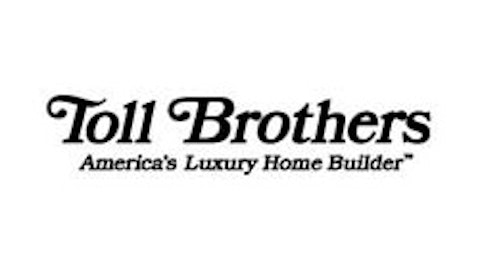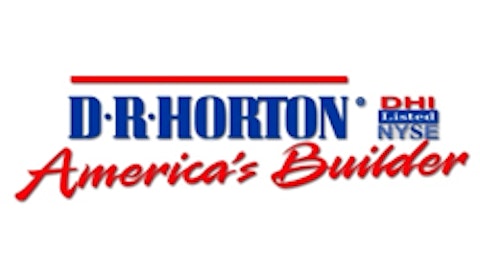Generally, there are two industries that are blamed for the financial crisis: banks and homebuilders. Banks, through lax lending standards, were offering mortgages to almost anyone during the 2003-2006 time period. A funny story I’d like to share is that in 2005 I was just out of college and was working as a bartender still, earning approximately $30,000 per year (on paper). All of my college buddies seemed to be scooping up houses, both for themselves and as the “best investments ever.” One friend was working as a bellhop in Vegas, and was allowed to buy 4 “investment” homes for a combined $1,500,000. Guess what happened to those guys…

The banks wouldn’t have been able to keep this illusion up for as long as they did without the cooperation of the other culprits, the homebuilders. When they realized that anyone could qualify for financing, most did the logical capitalistic thing and built as many houses as possible. When the bubble burst, a lot of new home communities were left without buyers and sat vacant, even until today in some parts of the country.
Fast forward to the present time, and the stocks of most homebuilders have performed very nicely. It seems that some are making new 52-week highs every week, and I believe that most of these stocks have come too far too fast. For example, KB Home (NYSE:KBH) is an astounding 190% above its 52-week high. I’d like to take a look at some of the bigger names in homebuilding to see if there are any that make sense as investments, or if the sector should be completely avoided.
Let’s start with KB. The market seems to be pretty optimistic on this company that has lost a total of $36.23 per share since 2007 and has not had positive earnings since that time. Although KB’s business has fundamentally improved with a backlog of $619 million or 2,577 houses, this is a ways off from the $6 billion backlog the company had pre-crash.
Lennar Corporation (NYSE:LEN) is one of the largest and most geographically diverse homebuilders in the United States, and concentrates on lower-priced homes. They have done a much better job than KB in my opinion of adapting to changing market conditions, producing more scaled-down homes and with its strategy of acquiring land at rock-bottom prices that banks repossessed as a result of the crisis. Lennar Corporation (NYSE:LEN) also has a stronger balance sheet than most, with over $1.1 billion in cash.
Not surprisingly, Lennar has actually been profitable every year since 2010, and this is expected to continue. At just over 13 times TTM earnings, Lennar Corporation (NYSE:LEN) may be worth a look, even if it has risen 1035% since its post-crisis low of $3.42!
D.R. Horton, Inc. (NYSE:DHI) has used similar strategies as Lennar to return to profitability, also turning a profit since 2010. They tend to target first-time homebuyers, who generally have an easier time getting financing through various programs and can afford more as a result of the current low interest rates. D.R. Horton, Inc. (NYSE:DHI) also has a good balance sheet, perhaps even better than Lennar with over $1.3 billion in cash and $2.1 billion in long-term debt (Lennar has $4.6 billion in debt).
PulteGroup, Inc. (NYSE:PHM) is not in quite as good shape as the previous two companies, however they did earn a profit in 2012. One of the reasons I’m not very bullish on Pulte is that they tend to sell higher-priced houses which don’t work quite so well as lower-end constructions; however, they have shifted their efforts lately toward more affordable housing. PulteGroup, Inc. (NYSE:PHM)’s average home price in 2012 was $276,000, compared to $258,000 for Lennar and $249,900 for D.R. Horton.
This is by no means an exhaustive list; however, I feel it is a good overview of the different states of the homebuilders right now. Other companies such as Toll Brothers Inc (NYSE:TOL), Beazer Homes USA, Inc. (NYSE:BZH), and The Ryland Group, Inc. (NYSE:RYL) may also be worthy of further research if you are bullish on housing.
While some companies such as D.R. Horton and Lennar do seem like reasonably attractive investments, I think that the rally in homebuilders over the past year or so is overblown. First, even with a housing recovery, I’m hesitant to invest in new home builders until the backlog of foreclosures, short sales, and existing homes on the market work themselves out. Running a search on existing homes where I’m looking to buy reveals that 6 of the first 10 choices listed have been on the market for over 6 months.
Next, the labor market needs to show serious, sustained improvement. Not only must unemployment be brought under control, but we need to create jobs with good wages and benefits before a true housing recovery will be able to occur.
While some of the homebuilders show promise, they have simply come too far too fast and need to take a breather before I would consider any of them as an investment.
The article Is It Time to Buy These Homebuilders? originally appeared on Fool.com and is written by Matthew Frankel.
Copyright © 1995 – 2013 The Motley Fool, LLC. All rights reserved. The Motley Fool has a disclosure policy.




